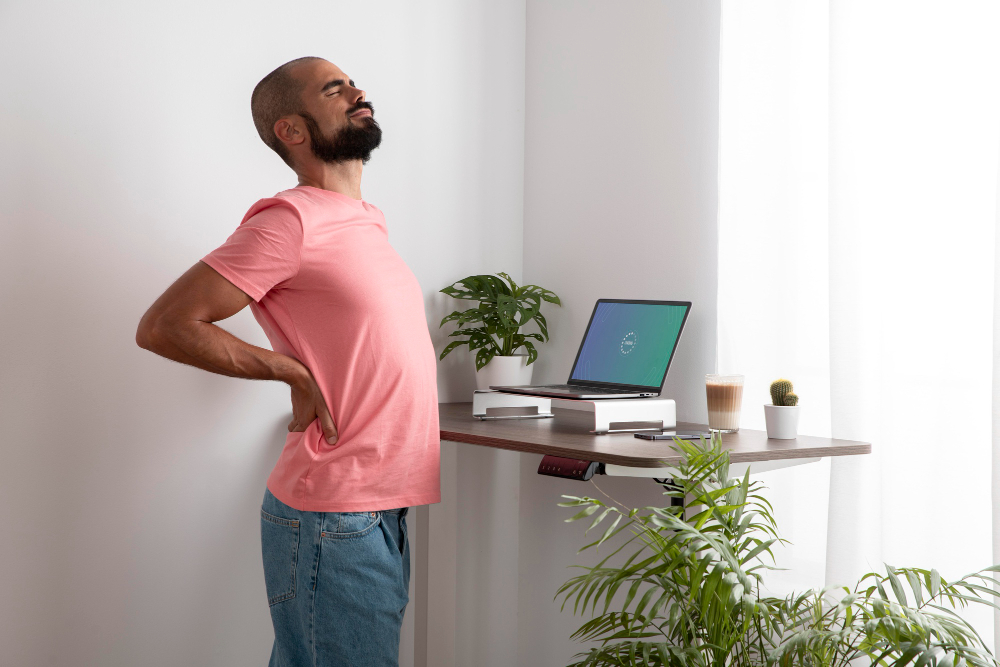
Pain radiating down the leg (sciatica) or arm (cervical radiculopathy) results from irritation or compression of spinal nerves. This “pinched nerve” pain can be sharp, burning, or accompanied by numbness or weakness, severely impacting daily life for Los Angeles residents. Dr. Zev Nevo at Body and Mind Pain Center offers specialized diagnostic techniques and evidence-based, non-surgical treatments to address the source of your nerve pain.
Request an AppointmentUnderstanding Sciatica & Radiculopathy:
These conditions occur when a nerve root exiting the spine becomes inflamed or compressed. Common causes include:
- Lumbar or Cervical Disc Herniation/Bulge.
- Spinal Stenosis (narrowing of the spinal canal).
- Foraminal Stenosis (narrowing where nerves exit).
- Facet Joint Arthritis/Cysts.
- Spondylolisthesis (vertebral slippage).
- Piriformis Syndrome (for sciatica-like symptoms).
- Nervous system sensitization can amplify pain in chronic cases.
Our Integrative Approach to Nerve Pain:
Dr. Nevo provides comprehensive care for sciatica and radiculopathy treatment in Los Angeles:
- Precise Diagnosis: Thorough neurological exam, potentially diagnostic ultrasound to visualize nerves, and review of imaging (MRI/CT).
- Osteopathic Manipulative Treatment (OMT): Gentle techniques to improve spinal mechanics, reduce pressure on nerve roots, and address related muscle imbalances (like piriformis).
- Ultrasound-Guided Interventions: Highly targeted injections near the irritated nerve (e.g., nerve hydrodissection, potentially selective nerve blocks) or for related structures like facet joints or piriformis muscle.
- Mind-Body Rehabilitation: Addressing central sensitization (PRT ), fear-avoidance behaviors, pain coping strategies, and nervous system regulation (HeartMath).
- Functional Medicine: Exploring factors like inflammation that can influence nerve health.
- Targeted Exercise/Rehab: Guidance on nerve gliding exercises, core stabilization, and safe movement via our Wellness Clinic.
Patient Empowerment & Goals:
Our aim is to reduce radiating pain, numbness, and tingling; improve strength and function; and provide strategies to prevent recurrence.
The Body and Mind Pain Center Difference:
Dr. Nevo’s expertise in PM&R, OMT, and advanced ultrasound-guided nerve treatments provides a unique advantage for diagnosing and treating sciatica and radiculopathy in Los Angeles. Our patient-centered, evidence-based, fiduciary care model, often integrating support from our Wellness Clinic, ensures you receive a personalized plan focused on effective, non-surgical relief.
Frequently Asked Questions:
What is the difference between sciatica and radiculopathy?
Sciatica specifically refers to pain radiating along the path of the sciatic nerve (down the back of the leg). Radiculopathy is a broader term for pain, numbness, or weakness caused by irritation or compression of any spinal nerve root (e.g., cervical radiculopathy causes arm symptoms).
How can OMT help a “pinched nerve”?
OMT uses gentle techniques to improve the mechanics of the spine and pelvis, potentially reducing direct pressure on the nerve root. It also addresses compensatory muscle tightness (like piriformis syndrome) that can mimic or worsen nerve irritation symptoms.
What types of injections are used for sciatica/radiculopathy?
Dr. Nevo utilizes ultrasound guidance for precision. Options might include injections around the nerve to reduce inflammation (using steroid) or to free up entrapments (hydrodissection), or injections targeting related pain generators like facet joints or trigger points. Epidural injections performed under fluoroscopy are not part of our typical offerings here.
How does ultrasound help with diagnosis or treatment?
Ultrasound allows Dr. Nevo to directly visualize nerves, muscles, and joints in real-time, helping identify potential sites of nerve irritation or entrapment. It provides essential guidance for performing highly accurate injections around sensitive nerve structures.
What can I do at home to help my nerve pain?
Specific nerve gliding exercises, maintaining good posture, avoiding prolonged aggravating positions (like certain types of sitting), gentle core stabilization exercises, and applying heat/ice as directed can often help manage symptoms. Personalized recommendations are key.
